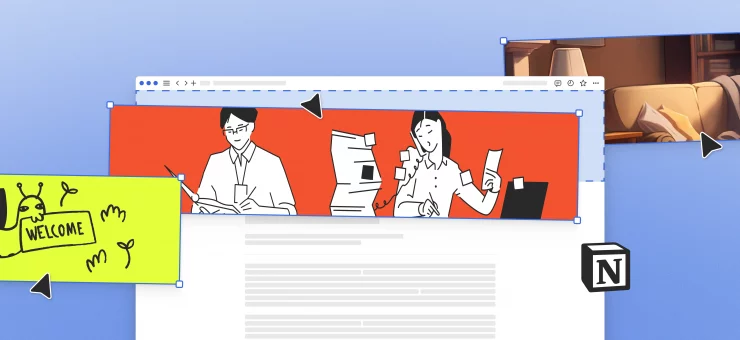Here’s the hard truth – no one likes dealing with angry customers, and no one likes receiving negative feedback. Whether you like it or not, as a business owner or freelancer, you will encounter hot-headed customers from time-to-time. It’s just how the nature of business works.
However, the thing that will separate you from an average business person is how you respond to enraged customers. In fact, if you make learning how to learn how to deal with such customers a business goal, and effectively implement a customer-focused business strategy, you can easily and quickly convert angry customers into loyal fans.
How can this be done? How do you deal with an irritated customer?
There’s really no science about it –you just need to be a better businessman, listen to your customer’s concerns, offer an apology, and try your best to resolve their problem. Let’s take a look at some real-world examples of how successful businesses turned difficult and angry customers into loyal fans.

Image by Icons8 Photos
Give Personal Attention to the Customer
In 2015, Proposify, a company that helps people create business proposals, received a Tweet on their official handle from a frustrated customer.
The customer had a genuine complaint about the software, but he wrote his Tweet in a sarcastic manner with the intent to publicly shame the company.
Proposify, being a company with a personality, responded with an equally sarcastic Tweet, while simultaneously offering an apology and assistance. Behind the scenes, Kyle Racki, CEO, and founder of the company had already initiated a personal conversation with the customer.
Racki responded to every issue the customer had in detail. He also offered several solutions and apologized for the bugs the customer was facing with their software.
On top of that, Racki also noticed that he and the customer shared the same hometown. At the end of his message, Racki mentioned this point, which instantly established a connection of trust between the two.
Shortly after their private conversation, the customer responded with a large message in which he not only apologized for his rude behavior but also thanked Racki for his timely response. Satisfied, he even followed up with a public Tweet praising the customer services of the company.
The best way to deal with a customer who is less than pleased with your product or service is to first listen to their concern, apologize as much as you can, and then try to resolve each of their concerns with a solution. This is especially important in food service and restaurants, which deal with more customer complaints than other types of businesses.
When you do this, you are building a positive image for yourself and your company. You are telling the customer that you actually care about them, and you are ready to deal with their concerns no matter how small or big they are.
Kyle’s story proves that even the most frustrated customer can be converted into a loyal fan if you just spend a little time giving them personal attention.

Image by Icons8 Photos
Give More to Receive More
Vizify.com, an online branding company, once received an email from a furious site tester complaining that he had to request an invite code to access the site. The email landed straight into the inbox of Arwa Jumkawala, the director of marketing.
Arwa instantly responded with a personal message and apologized to the individual. She then explained how the system worked and why an invite was necessary. She then proceeded to give the customer her own friends and family invite code.
Later on, she found that the customer not only used the code, but he also wrote an email to Arwa thanking her for her timely response. He also promised to spread the news of the new site with his friends.
If you’re ever faced with a customer who genuinely misunderstands how your services work, make sure to apologize for the confusion and try your best to resolve their issue by giving them something of value.
And as Sam Walton liked to put it, “Exceed your customer’s expectations. If you do, they’ll come back over and over. Give them what they want – and a little more.”
In the case above, Arwa dealt with the situation perfectly by giving something highly valuable to a furious customer. In return for her generous gift, she not only made the client a fan of the company, but this also brought in several potential consumers to the business.

Image by Icons8 Photos
Make It Painless
Martin Simms, a 62-year-old senior citizen, living in New York, once had an excellent experience at a local computer shop. He had bought a brand new laptop, but upon reaching home, he found out that the laptop’s wireless connection kept turning on and off.
Since he had to travel outside the city for the next few days, he couldn’t bring back the faulty laptop for exchange. When he finally got the time to reach out to the computer store with his complaint, it was too late. The exchange/refund policy had expired.
Furious, he demanded to meet the manager and explained everything that had happened. The manager apologized, took the laptop, and asked the customer to go home and wait for a call from the store.
The next day, the manager himself called Martin and requested him to visit the store. When Martin went to the computer store, he was handed a brand new boxed laptop with an apologetic note and a gift of a free upgrade to the latest model.
The company might have lost a few dollars in the process, but they won the heart of the customer. Martin was so happy that he shared his story publicly on Facebook, and the next day, it went viral on social media and later on made it into local newspapers. As a result of this great customer service, the computer shop secured several hundred new customers.
Esteban Kolsky, the founder of ThinkJar, explains that if a customer is not satisfied with your services, 13% of them will tell 15 or more people about their bad experience with you. On the other hand, 72% of customers will share a positive experience with 6 or more people.
So treat your customers with your best attitude, even if they seem unimportant to you.

Image by Icons8 Photos
Conclusion
In this post, I have provided you with real-world examples of great client service practices. These examples should help you set a customer-focused strategy that puts your clients on the top, and ensures your company’s success.
When you apply these tactics effectively, you will be able to convert angry customers to raving fans effortlessly.
About the Author: this is the guest post by Marsha Kelly who sold her first business for more than a million dollars. She has shared hard-won experiences as a successful serial entrepreneur on her Best4Businesses blog, where she also regularly posts business tips, ideas, and suggestions, as well as product reviews, for business readers. As a serial entrepreneur who has done “time” in corporate America, Marsha has learned what products and services really work well in business today.
Title image made with Photo Creator
Learn how to deal with toxic clients, get the checklist for a new website launch and read how big design companies market themselves


